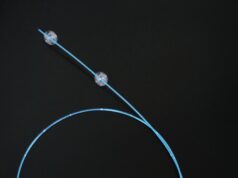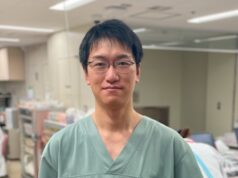
Twelve-month results from the SYNCHRONOUS trial, which is evaluating the role of prophylactic anterior accessory saphenous vein (AASV) ablation for the prevention of recurrent varicose veins, show superiority among the group of patients whose AASV was ablated at the same time as their great saphenous vein (GSV), as opposed to those patients who underwent ablation to the GSV only.
Tobias Hirsch (Halle, Germany) presented the data during a podium first in the Venous & Lymphatics Controversies session yesterday afternoon (Wednesday) at the Charing Cross (CX) International Symposium 2024 (23–25 April, London, UK).
Some 13.7% of untreated AASVs larger than 2mm and 4.8% of those smaller than 2mm showed reflux after a year, while 0.9% of AASVs in the treatment group, Tobias said.
The multicentre, prospective, controlled study enrolled 1,173 between February 2019 and April 2022, with half of the patients in group A (GSV only) and half in group B (GVS plus AASV). The cohort is being followed out to five years.
Tobias and colleagues are assessing the impact of synchronously treating the AASV to prevent recurrent varicose veins, with secondary endpoints including complication rate, post-operative pain intensity, and quality of life.
“When a preventive ablation of the AASV is being considered, it can be stated that there is no increased rate of side effects,” Tobias said. “Compression therapy after endovenous laser ablation leads to significantly fewer symptoms compared to no compression. Therapy duration of up to 14 days was found to be the most effective regime.”









